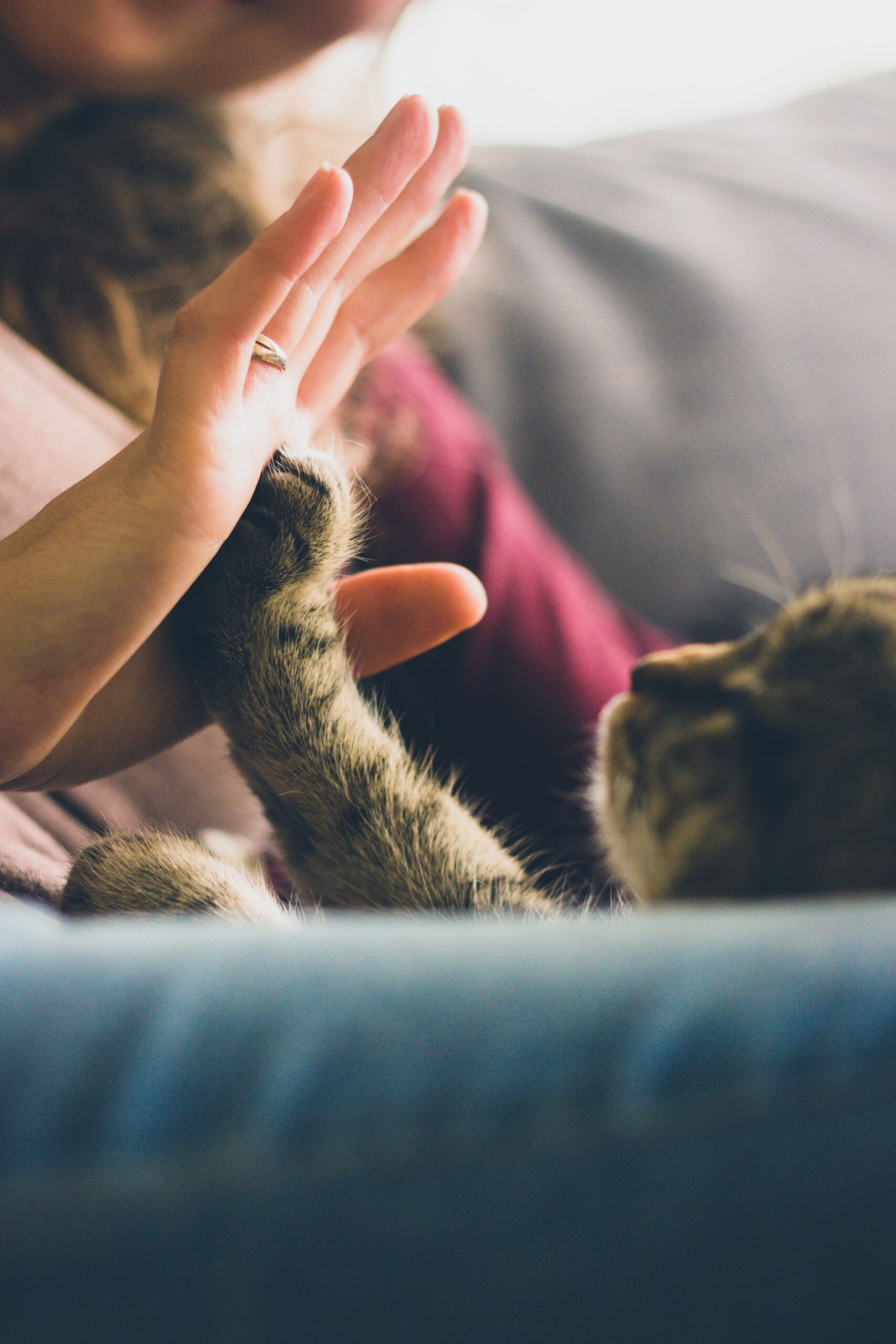A warm fire, a cup of tea, cozy blanket and a purring cat sat on my lap is the definition of my perfect afternoon. At the other end of the spectrum, my sister would rather be adventuring in the woods in the sunshine; horse in one hand and her dog in the other.
The way in which we choose to spend our weekends may differ greatly but one thing remains the same; a four legged friend is always in tow.
We aren’t alone in our appreciation of our pets – humans and animals have a natural bond that can be seen dating back thousands of years, across the globe and spanning a multitude of cultures. From horses plowing fields to roosters signaling the start of a new day, to collies helping to herd sheep; animals and humans go together like bread and butter (perfectly).
Animal lovers everywhere won’t hesitate to tell you all of the amazing benefits reaped as a result of having fur-children. Those of us lucky enough to grow up with a dog by our sides can also likely attest to the joy and happiness they enriched our lives with. Scraped knee? Bumped head? No match for the family pet who seemed to know just when we needed a friend most.
I’d take a bet that there are very few people who wouldn’t be instantly uplifted upon sight of a sweet old dog wagging it’s tail as you approach or a puppy strolling along happily; ears much too big for it’s body. Animals make us happy – this is obvious. In fact, the correlation between animals and their effect on the human psyche has been cited for centuries. The study of just how much they can improve our lives though, is something that is quite a bit younger.
The formal idea of using animals as a type of therapy or Animal Assisted Therapy is something less of us are familiar with; having only been officially coined as such in the 1960’s.
The umbrella term Pet Therapy was used for a number of years but has now been updated in favour of Animal Assisted Interventions (AAI); a term which currently encompasses Animal Assisted Activities (AAA), Animal Assisted Therapy (AAT) and Animal Assisted Education (AAE).
What’s the difference?
Animal Assisted Activities (AAA) is the type of AAI most commonly seen and refers to more informal, casual encounters with a furry friend and are usually in an educational or recreational setting. Therapy dogs on campus during exam week, companion cats in seniors housing, or puppies making rounds at hospitals are some examples of AAA you might be already familiar with (and perhaps even experienced).
Animal Assisted Education (AAE) is the use of animals in a skills-based learning setting such as children learning to read aloud by practicing to a cat, or dogs being used in a correctional facility to help facilitate certain skills.
Animal Assisted Therapy (AAT) refers to the formal use of animals in a structured form of treatment therapy often in conjunction with additional, more traditional, techniques and implemented by a licensed therapist. While AAA and AAT might both employ some of the same activities, animals used in AAT have undergone training to ensure they’re up to the challenge and the therapist tracking results with each interaction.
It not just dogs and cats, either. While the two are certainly frontrunners in the therapy animal world, they certainly aren’t alone. The more the study grows, the more likely you’ll have your pick of the animal-type litter. Dependent on the setting and needs, it’s not unusual to find guinea pigs, ferrets, birds, llamas (yes please), horses and even dolphins being used as part of an AAI program.
“Animal Assisted Therapy is the science that employs the merit of human-animal interaction to alleviate mental and physical problems.” – National Institutes of Health
Currently already being incorporated into treatment plans for those living with things such as stress, depression, anxiety, and PTSD, the field of AAT only continues to grow as more research takes place.
Animals hold no judgment; they don’t care about age, gender, culture, social class or our colorful backgrounds.
Being model listeners, they can make excellent mediators when speaking about challenging or emotional situations. Some people might prefer telling their story while directing their attention at a dog than to a therapist, one may find conversation flows better when it’s broken up by lighthearted comments about the cat, and others may just find petting an animal to have a calming effect in an otherwise nerve-racking situation.
“Animals are such agreeable friends – they ask no questions; they pass no criticisms.” – George Eliot
As a result, incorporating Animal Assisted Interventions into therapy plans is shown to have reported not only positive psychological effects, but physical ones as well.
Some of these include:
- Improved social skills
- Calmed anxiety
- Boosted confidence
- Reduced stress
- Improved mood
- Reduced feelings of loneliness
- Helped build rapport
- Decreased heart rate and blood pressure
While still lesser-practiced than other forms of therapy, it’s undeniable that the addition of our animal friends not only as a pet to welcome us home from work, but also as a valuable, recognized form of treatment can do incredible things for a person’s wellbeing.
As Animal Assisted Interventions gain in popularity and more research takes place, the study itself will only continue to grow, diversify and become a more familiar and frequently used practice. AAT can be a great option for many as it required zero special skills; all you need to bring is yourself and your love for animals.
Resources:




